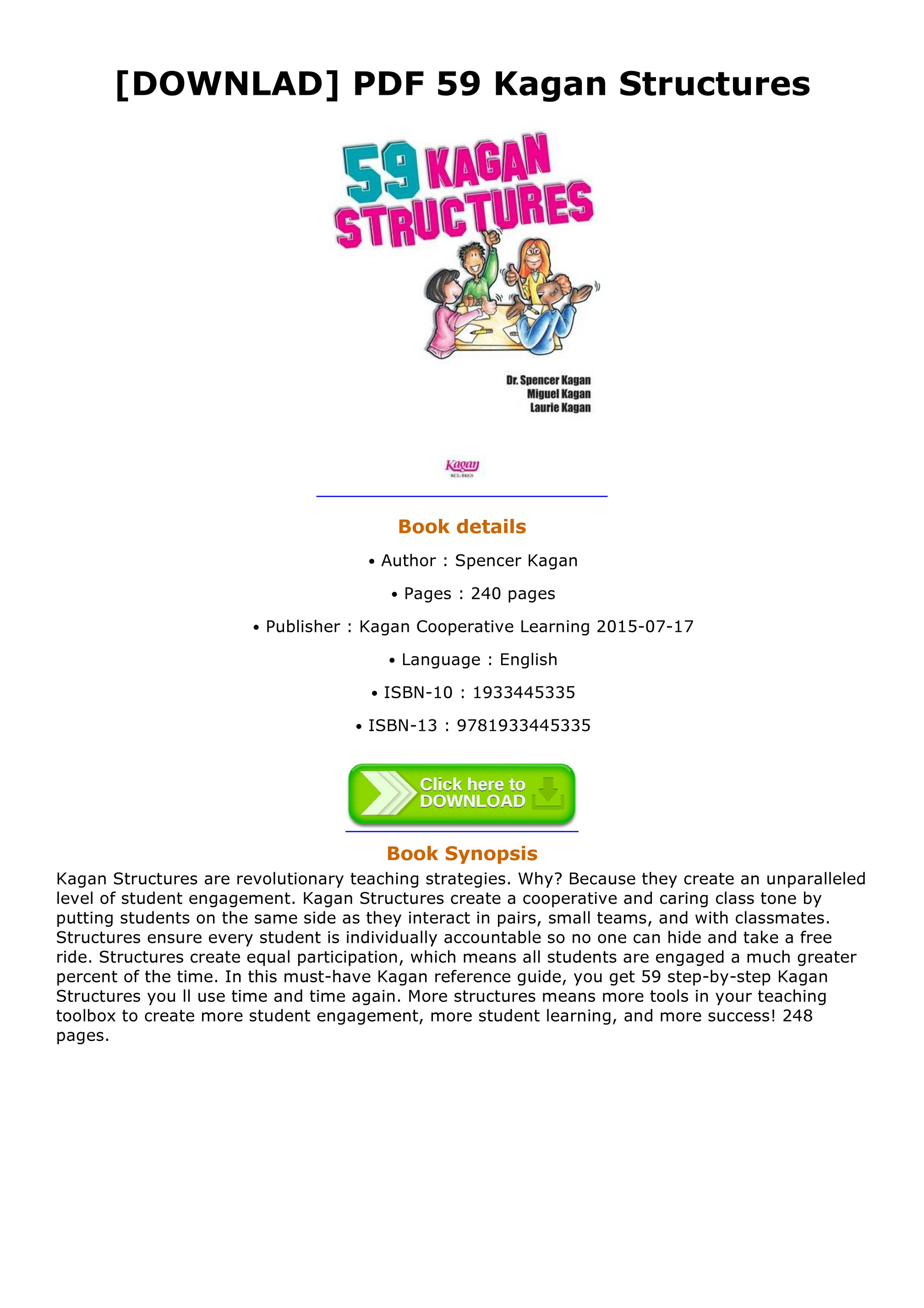

(In a small class, all students could perhaps report.)

After both partners have had equal opportunity to speak, the teacher randomly chooses a number of students, and asks them to summarize what their partners have said. After the allotted time has elapsed, the other student speaks for the same period of time on the same, or another, stipulated topic, with her or his partner in the listener role. The other student listens quietly and can nod or smile, but cannot speak or interrupt the speaker. That student speaks about a specified topic for a specified length of time. The teacher chooses a number, 1 or 2, to speak first. Let us look at some example Kagan structures and some of their uses. Structures can be mixed and matched, and adapted to the particular student group. Many of the structures can fulfill a number of aims simultaneously, depending on how the teacher uses them. The structures have various aims, such as: building team spirit and positive relationships among students information sharing critical thinking communication skills and mastery (learning/remembering) of specified material. Students can work together by following the steps to the structure, using material or content selected by the students themselves or by the teacher. These structures stress positive interpersonal peer relationships, equality, self-esteem, and achievement. Kagan (1994 Kagan and Kagan, 1998) has developed roughly 200 classroom "structures", which may be thought of as steps to classroom activities. The structural approach to cooperative learning I will explain briefly the fundamentals of his approach, relative especially to critical thinking and positive classroom relationships. I was able to attend many of the workshops and talk with him about his approach to cooperative learning.

The second aim is high academic achievement for all learners in a class.ĭuring a two-week visit to Japan, Kagan gave two experiential workshops at the conference, and numerous workshops prior to the conference dates. One aim is to foster positive, cooperative relationships between learners studying any subject in a class. Spencer Kagan, famous for the so-called structural approach to cooperative learning. One of the plenary speakers at Peace as a Global Language II was the American educational psychologist Dr. Keywords: : Cooperative learning, cooperative learning structures, multiple intelligences, positive human relationships This paper features examples of Kagan's cooperative learning structures, comments from Japanese university students about a Kagan workshop they attended, and some observations from the author, a long-time user of cooperative learning and teacher/teacher trainer in Japan. Kagan's approach utilizes contentless structures that provide a blueprint for classroom activities, where students can collaborate with each other in supportive and egalitarian ways, with content provided by the teacher or students. It can be used to teach any subject matter, whether that be foreign languages, math, social studies, etc.ĭr. Cooperative learning is a type of structured peer interaction emphasizing positive human relationships, collaboration between peers, active learning, academic achievement, equal participation, and equal status of students in the classroom. This paper briefly describes and discusses Spencer Kagan's approach to cooperative learning. Spencer Kagan's Cooperative Learning Structuresīy Jane Joritz-Nakagawa (Aichi University of Education)


 0 kommentar(er)
0 kommentar(er)
